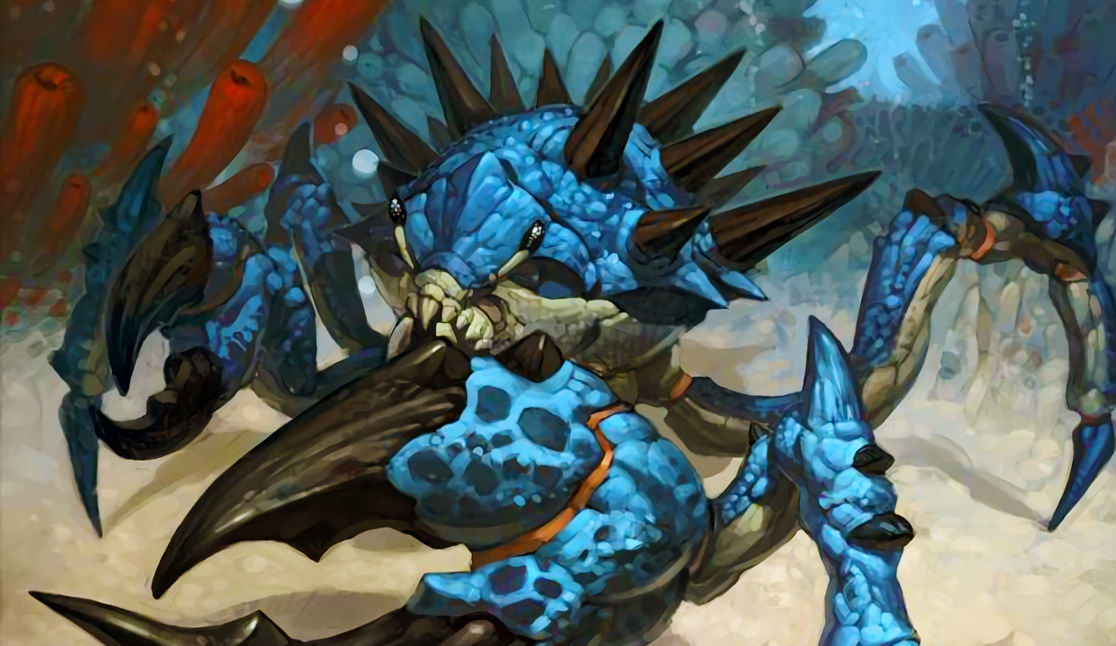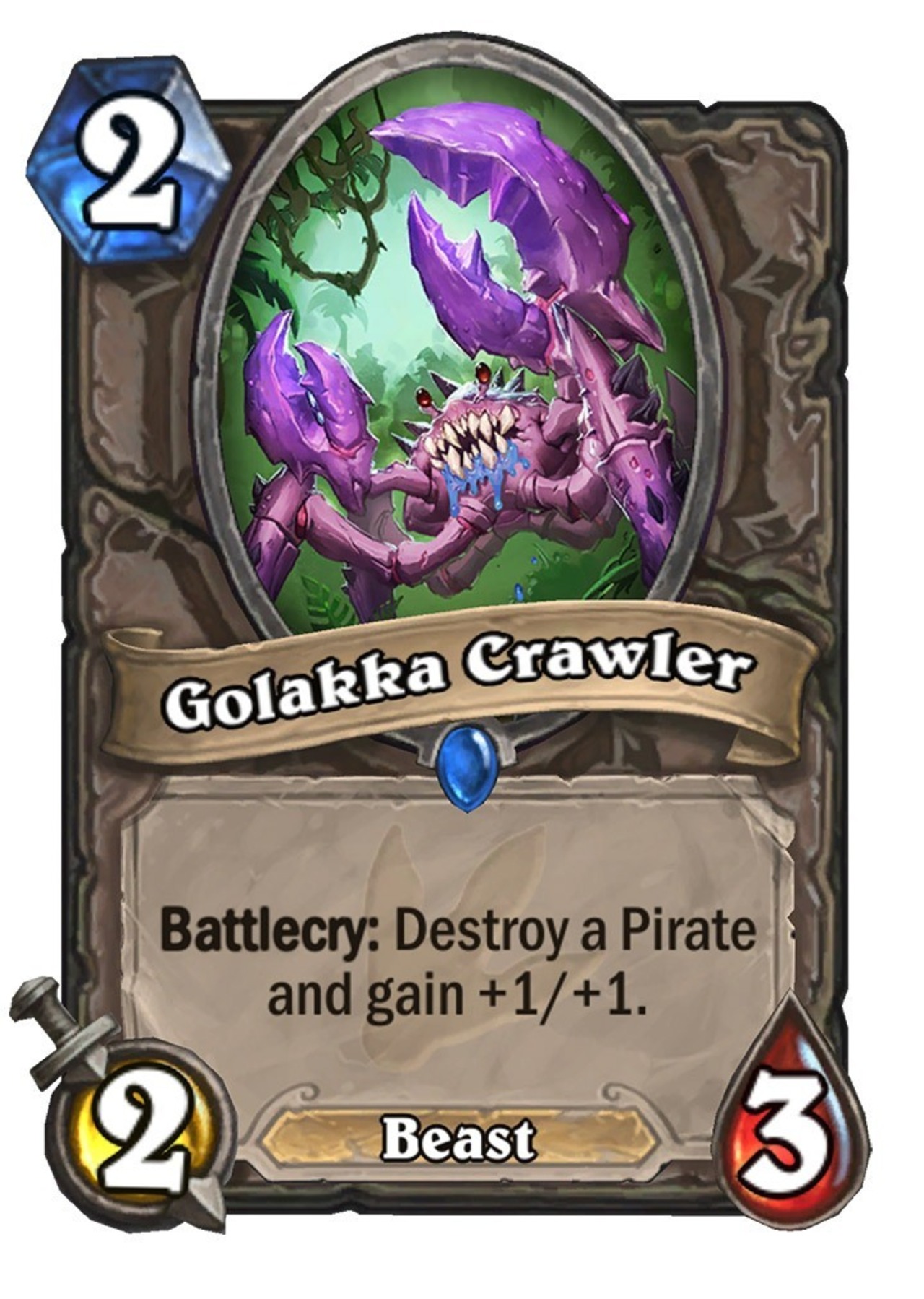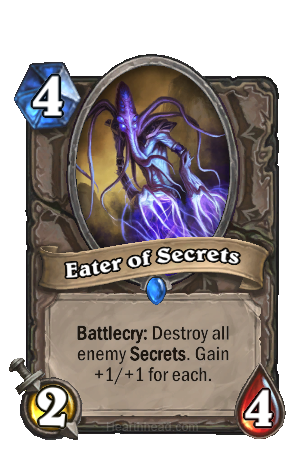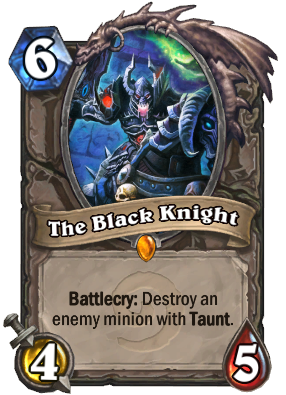We need to talk about Hearthstone’s crab problem
Pirates and Murlocs are everywhere, and so are the cards that combat them, but what’s the correct way to ‘tech’ your deck?

We’ve all had those days playing Hearthstone where it feels like you’re queuing up against the same deck again and again. Let’s say it’s Pirate Warrior, because it so often is. Out of frustration, you go into your collection, open up your deck, and jam in a couple of Golakka Crawlers to teach those Warriors a well-deserved lesson. As you hit the ranked play button again, one of two things will happen:
1. You continue to encounter the never-ending flood of Pirate Warriors and feel like the new Kolento as you rocket up the ladder.
2. All the Pirate decks mysteriously vanish and you’re left staring forlornly at the crabs rotting in your hand, wishing they were something else.
From my experience, the second option is much more common. While it’s possible to ‘beat the meta’ by including the right set of tech cards—ie cards which target one particular thing, and generate a large reward when they ‘land’—most of the time there is no quicker way to disabuse yourself of the idea that a deck is all over the ladder than by trying to tech against it.
To understand why tech cards aren’t the easy answer they might seem, it helps to begin with one of the most basic premises in Hearthstone: all good decks work because they have a clear plan, which must be executed consistently and efficiently. Sometimes these plans vary depending on matchup, but the principle remains the same. You win by making your deck achieve its goal. But that means any card that does not help you achieve the goal is one you shouldn’t be playing. This principle helps explain why most tech cards don’t see significant amounts of play, and why there are some notable the exceptions to the rule.

This crabby 'hate' card was added with the recent Journey to Un'Goro expansion to give players a way to combat Pirate decks.
So let’s consider a tech card that has been relatively successful lately: our crabby friend, the Golakka Crawler. The reason it works is twofold: it both effectively prevents Pirate decks from achieving their goal, while also helping the decks running the Crawler execute their own strategy. As a 2/3 for two Mana, playing the Crab without landing its Battlecry isn’t hugely harmful to achieving your plan, so long as the plan involves dropping minions in the early game to build tempo.
In Hunter decks, the Beast tag on the Crawler also helps achieve your other goals of activating Kill Command, Crackling Razormaw and Houndmaster when necessary. Moreover, when you do manage to eat a Pirate, you will have effectively flipped the opponent’s plan. Now you’re the one dictating tempo and doing face damage, leaving them stranded.
Keep up to date with the most important stories and the best deals, as picked by the PC Gamer team.
Peckish for Pirates
Crawlers are predominately good in a meta with enough Pirates (obviously) and in a deck which has a tempo-based game plan. When your deck’s plan isn’t based on leveraging tempo, the inclusion of crabs is more suspect, which is why you won’t find, say, Freeze Mage running Crawlers. And when Pirates aren’t common enough, Crawlers go away altogether, which usually happens after people start playing enough Crawlers to punish Warriors, which is how tech cards can ensure the meta keeps cycling.
On the subject of crabs seeing play, we also need to talk about the OG shellfish, the Hungry Crab. As Murloc Paladin and decks running the ‘Finja package’ become popular, Hungry Crab starts looking like an appealing tech choice. But again it’s important to think about your deck’s gameplan when deciding whether to include the classic crab.
The same points made about Golakka Crawler certainly hold true for Hungry Crab. It’s better in a deck looking to leverage tempo than it is in a slower, more controlling, or combo deck. Hungry Crab is also a fairly narrow tech choice: like the Crawler, Hungry Crab only eats one tribe of minion, so Murlocs need to be very common for the crab to be worth running.
However, Murlocs are a lot easier to kill in general than Pirates. If Murloc bodies are smaller, the tempo swing you gain from Hungry Crab is correspondingly smaller than the one from a Crawler hit. Many cards are effective at killing Murlocs, without needing to be chosen specially (think SI-7 Agent or Jade Claws). Why include a narrow tech choice when you could play a broader one that largely achieves the same goals?
As such, it is in decks that can advance their primary goal by having cheap minions that Hungry Crab looks the most appealing, like Aggro Druid, or cares about the Beast tag, like this Hunter deck which runs the full complement of four crabs, and recently broke into the top 100.
Don't eat your own

Unlike Kezan Mystic, the previous anti-Secret card, this isn't even that great when it lands.
You should never include a tech card to use against your deck. By this I mean you don’t want to play Golakka Crawler because your deck has Pirates it can eat, and you don’t want to play Hungry Crab because you run murlocs. The primary goal of any Pirate or Murloc deck is never to activate the Battlecry effects of the crabs. Getting the text on those cards to be impactful doesn’t matter if that impact doesn’t help you reach your goal. As neither crab is good for building tribal synergy or gaining consistent tempo when they target your own minions, teching against your own cards doesn’t seem like a great idea.
Much of the same thinking also applies to the less successful tech cards. Consider a card like Eater of Secrets. If your opponent is not playing secrets, it is a 4-cost, 2/4 body, which is basically a disaster. That card can never help your deck achieve a meaningful, primary goal. Even when you are playing against a deck with secrets, though, Eater is unlikely to help you achieve your primary goal. What it will usually do is prevent your opponent from achieving their goal. This is, effectively, how tech cards can be defined: a card that is intended to stop your opponent from executing their plan.
I played an Eater of Secrets against a Freeze Mage, destroying both an Ice Block and an Ice Barrier, and still lost...
In practical terms, it means an Eater of Secrets can help get past an Ice Block after you have already achieved your primary goal (which in this example would be setting your opponent’s life total into lethal range). The net result is that when you put Eater of Secrets into your deck, you are not helping it achieve its primary goal. What you are doing is disrupting your opponent’s plan… Sometimes. I recently played an Eater of Secrets against a Freeze Mage, destroying both an Ice Block and an Ice Barrier, and still lost because I wasn’t close enough to executing my own plan by that point.
There’s currently a case to say that Eater of Secrets might also be good against Paladin, what will all the Hydrologists around. But how good is destroying a Paladin Secret anyway? It’s not helping you achieve your primary goal, and its ability to disrupt the Paladin’s plan is markedly lower (compared to a Mage), because the Paladin isn’t reliant on getting secrets into play. That just happens to be something their deck can do, but it’s not what it was primarily designed to do. Hence Eater of Secrets is still not a strong tech choice.

The Black Knight's powerful effect is letdown by the card's weak body compared to its cost.
All of which helps us understand the present failure of a once beloved tech card: The Black Knight. Like Eater of Secrets, the body on Black Knight—six Mana for a 4/5—is too weak to help any deck achieve its primary goal. So it needs to provide some serious disruption to the opponent’s plan in order to see play, and in that regard it isn’t having much luck.
The goal of The Black Knight is to create tempo swings, which means it must be played against a deck that is using expensive Taunt minions. Currently, that deck doesn’t exactly exist. Taunt Warrior is the closest we have, but the Taunt minions aren’t played because of the tempo they provide. If you’re just looking for hard removal, there are many strong options with broader application, like Envenom Weapon, Hex, or Execute that will work better against Taunt Warrior decks.
As a final note, it’s worth pointing out that the best tech options are often ones that we might not even see as tech cards explicitly. Back when the Mean Streets of Gadgetzan expansion dropped, I found that Patches was great to include in Miracle Rogue lists. This was partly because its proactive nature fitted with the gameplan of Rogue, but also because Patches was effective at stopping other decks that were running Patches. To be effective tech, a card needs to prevent your opponent from achieving their game plan, but that doesn’t mean it has to only interact with specific cards in their deck. Control Warrior’s armor gain tools are effective—and incidental—tech against Freeze Mage. This is when tech choices are at their best.
When it comes to beating the meta, it’s often better to play a deck that counters opposing strategies by achieving its own more efficiently. Or in other words, tempting though it might be, try to avoid too much crab for now.

